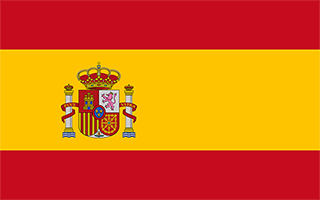Facts and Data
Webpages:
Official Unesco Page
View photos from OUR PLACE the World Heritage collection
Basis Data:
Unesco World heritage since: 1991
Size of heritage: 18 ha
- Buffer zone: 163 ha
Coordinates:
Longitude: 1,083°
Latitude: 41,381°
Summary
This Cistercian abbey in Catalonia is one of the largest in Spain. At its centre is a 12th-century church. The austere, majestic monastery, which has a fortified royal residence and contains the pantheon of the kings of Catalonia and Aragon, is an impressive sight.
Location on Map
Show bigger map on Openstreetmap
Introduction
The Poblet Monastery, located in Vimbodí, in the Province of Tarragona, Catalonia, Spain, is a UNESCO World Heritage site. This magnificent monastery holds great historical and cultural significance, dating back to the 12th century. Today, it stands as a testament to the rich heritage of Catalonia and attracts visitors from around the world.
History
The Poblet Monastery was founded in 1151 by Cistercian monks under the patronage of Ramon Berenguer IV, Count of Barcelona. The monastery quickly became a center of religious and cultural influence in the region. Over the centuries, it grew in size and importance, with various additions and renovations carried out by different generations of monks.
During the 19th century, the monastery faced a period of decline and abandonment due to political unrest and the confiscation of church properties. However, in 1930, it was declared a National Monument, and restoration work began. The monastery was later recognized as a UNESCO World Heritage site in 1991, further highlighting its historical and architectural significance.
Architecture
The Poblet Monastery showcases a stunning blend of architectural styles, including Romanesque, Gothic, and Renaissance. The complex is surrounded by fortified walls, creating a sense of grandeur and protection. The main entrance, adorned with intricate sculptures, leads to the impressive cloister, considered one of the finest examples of Catalan Gothic architecture.
Within the monastery, visitors can explore the church, with its soaring vaulted ceilings and beautiful stained glass windows. The royal pantheon, where several kings and queens of Catalonia are buried, is another notable feature. The monastery also houses a library, containing a vast collection of ancient manuscripts and books.
Current State
Today, the Poblet Monastery is an active religious community, with a small number of monks still residing within its walls. The monastery continues to serve as a place of worship and spiritual retreat. Visitors are welcome to explore the site and learn about its rich history through guided tours.
The Poblet Monastery has also become a popular tourist destination, attracting thousands of visitors each year. Its UNESCO World Heritage status has helped to preserve and protect the site, ensuring its historical and cultural significance is recognized and appreciated.
Efforts have been made to maintain and restore the monastery, ensuring its architectural integrity. Ongoing restoration work aims to preserve the original features and artwork, allowing visitors to experience the monastery as it was centuries ago.
Conclusion
The Poblet Monastery stands as a remarkable testament to Catalonia's rich history and architectural heritage. Its centuries-old walls hold stories of religious devotion, cultural influence, and political upheaval. Today, it continues to inspire awe and reverence, inviting visitors to explore its grand halls and tranquil courtyards. The Poblet Monastery is a true gem of Catalonia and a must-visit destination for those seeking to immerse themselves in the region's history and culture.
Hotels and places to stay
Apartaments Ca La Pauleta
Hotel Monestir
Sercotel Villa Engracia
Videos from the area
Videos provided by Youtube are under the copyright of their owners.









